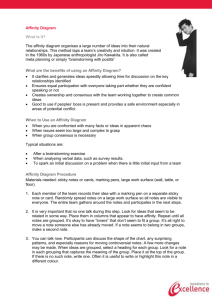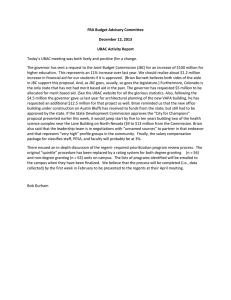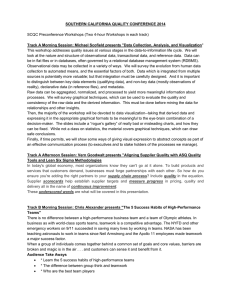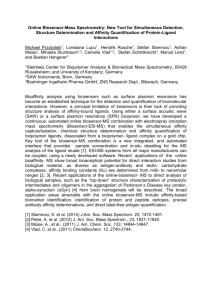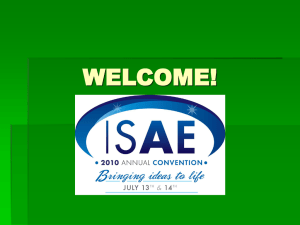Communicating Science: Getting your results published in the JBC Martha J. Fedor, Editor-in-Chief
advertisement
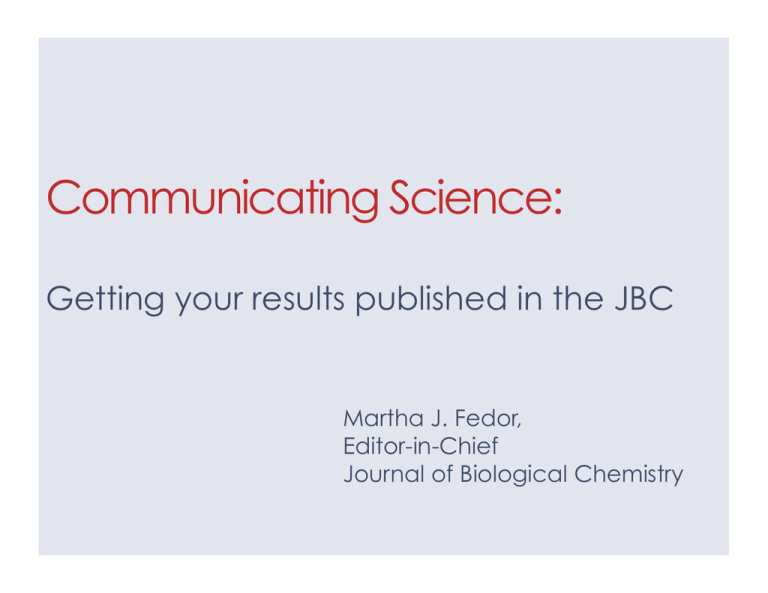
Communicating Science: Getting your results published in the JBC Martha J. Fedor, Editor-in-Chief Journal of Biological Chemistry How to write an outstanding paper: Do outstanding science Ask an important question Work with smart people Choose a productive environment Integrate writing with research Take a clear and logical approach Turn results into figures Why Publish: Make a scientific contribution If a tree falls in the forest….. Writing promotes outstanding research Imposes purpose, logic on experimental design Highlights gaps in experimental data Motivates complete, accurate recordkeeping Why Publish Now: Significant scientific advance Solid story Reproducible Consistent Complete When to Publish in the JBC: JBC’s Mission: The Journal of Biological Chemistry publishes papers based on original research that are judged to make a novel and important contribution to understanding the molecular and cellular basis of biological processes. Why publish in the JBC: Immediate publication upon acceptance Manuscript version immediately accessible to everyone forever Editor, Associate Editors, Reviewing Editors are all active scientists Affordable - $90/page, free color figures Fast - Avg 22 days to first decision Scientific writing: Tell a good story Complete but concise Direct, precise, consistent Optimize figures Simple, clean, self-explanatory Use appropriate statistics Mean, standard deviation, range Significant figures Number of digits that reflects precision The Submission: Cover letter List authors Summarize (pitch) the content Suggest potential referees, exclusions Instructions to Authors Verify text and figure file formats Complete-keywords, abbreviations Assemble forms-copyright, reprints Database submissions, for future release (Genbank, PDB, etc.) After submission: Expect acknowledgment of receipt Editor - Should manuscript be reviewed Consistent with Editorial Guidelines Potentially acceptable Manuscript sent to 2 reviewers Editorial Board and/or expert referees ~several days to weeks (unless referees differ) The Decision Letter: Accept (<5%) Accept after minor revisions Revisions of text and/or figures Little, if any, new data needed Reconsider after major revisions Usually requires new data Decline (>50%) “Serious flaws” “Not sufficiently significant” Responding to Critiques: Stay positive and constructive Revise the manuscript Fix the “problems” Clarify any misunderstandings Rebuttal letter to challenge rejection Factual errors in critiques that might have affected the outcome The Resubmission: Cover letter Stay civil Point by point response to reviewers’ concerns Explain each revision Explain any decisions to leave as is Annotate revision to show changes Accepted for Publication! Send files to publisher Format files per Instructions to Authors Correct page proofs Fix errors only, no major revisions Quick turnaround Publication as “Paper In press” Freely accessible to all forever (Redacted version is copyright protected for 1 year) Communicating Science in 2013: The Challenges The volume of scientific information has exploded The JBC in 1968 Editorial Board members: 50 Associate Editors: 4 Number of Pages Published 6,500 The JBC in 2013 Editorial Board members: 743 Associate Editors: 30 Number of Pages Published: 44,799 Research has become more specialized 5 JBC Table of Contents Divisions in 1968 Chemistry and Metabolism of Macromolecules Chemistry and Metabolism of Substances of Low Molecular Weight Oxidation-Reduction and Bioenergetics Enzymology Control Mechanisms and Biochemical Genetics Research has become more specialized 22 Table of Contents Divisions in 2013 Bioenerge(cs Cell Biology Computa(onal Biology Developmental Biology DNA and Chromosomes Enzymology Gene Regula(on Genomics and Proteomics Glycobiology and Extracellular Matrices Immunology Lipids Membrane Biology Metabolism Microbiology Molecular Bases of Disease Molecular Biophysics Neurobiology Plant Biology Protein Structure and Folding Protein Synthesis and Degrada(on RNA Signal Transduc(on Opportunity New Editor in Chief Online only in 2012 Bringing down the monolith: Affinity Groups Restructuring at the editorial level and the journal presentation level to create communities based on shared interests. One affinity group per table of contents division Offer context for current research Minireviews Classics Reflections JBC TOC HEADING TOC HEADING TOC HEADING AE AE AE AE AE AE AE AE TOC HEADING AE AE AE TOC HEADING AE AE AE AE TOC HEADING AE AE AE Affinity groups are interconnected Affinity groups from an editorial perspective Associate editors with shared interests collaborate to: Define editorial standards Maintain review consistency Identify emerging areas Choose board members Build the JBC Collections Minireviews Classics Reflections Affinity groups from an author’s perspective Affinity groups from an author’s perspective New search and keyword functions to help authors find prospective reviewing editors. Reviewing editors can manage their profiles. Affinity Groups from a reader’s perspective Affinity Sites at www.affinity.jbc.org Help scientists with common interests to connect Provide depth and context for current research Create "homes" for scientific areas: Current research of interest to specific affinity groups Papers of the Week Author profiles Theme issues Reflections Classics Cell Biology Affinity Site Affinity Sites Link to affinity sites through articles Online enrichment Capsules Increase accessibility of articles to our general audienceno jargon Improve browsing experiencesmall space Emphasize impact Online enrichment Capsules Increase accessibility of articles to our general audienceno jargon Improve browsing experiencesmall space Emphasize impact Online enrichment Use technology to enhance communication: Inline video 3D structures in electronic PDFs Database links in article Reference links Floating figure captions: Read the legend in any view Links from PDFs to high-resolution figures THANK YOU! How can we communicate science better?

